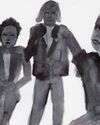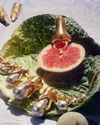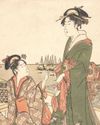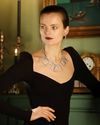In golden Marrakesh, a solo sojourn inspired by Edith Wharton’s classic travel memoir, “In Morocco”, unfolds in adventureready khakis, creams and camels.

IN 1920, EDITH Wharton published “In Morocco”, a detailed account of her time spent travelling through the region with Hubert Lyautey, who served as the resident general of French Morocco from 1912 to 1925. By the end of the First World War, Morocco was still a colonial entity, divided between French and Spanish powers (the country would claim independence in 1956). There were no English-language guidebooks and few accounts from those who had travelled past the international port city of Tangier (“frowsy, familiar Tangier, that every tourist has visited for the last forty years,” Wharton complained in her book). It’s difficult to imagine a Morocco so unknown to such fashionable Western society — Wharton, who kept company with dukes and duchesses and Teddy Roosevelt, and who ran in the same circles (and traveled through much of Europe) with her dear friend, the American writer Henry James, was not writing about the same place that has become so well exoticised since by everyone from Yves Saint Laurent to Marella Agnelli.
Few women travelled as Wharton did, and even fewer wrote about their journeys with such clarity and beauty — then or now. She is well known for her novels, including “The Age of Innocence” (which won the Pulitzer Prize in 1921) and “The House of Mirth” (1905) — both grand, moral tales of the elite echelons of New York society during the Gilded Age — but Wharton, who died in 1937, has often been, as the biographer Hermione Lee writes in The New York Review of Books, “downgraded as a reactionary, an antimodernist, a rich old school genteel snob and a minor female version of Henry James.” In the last 50 years, much more attention has been given to the parts of Wharton’s life that don’t fit as neatly into her larger successes: her lesser-known fiction; her work on interiors, landscaping and architecture; and her travel writing.
この記事は T Singapore: The New York Times Style Magazine の July 2018 版に掲載されています。
7 日間の Magzter GOLD 無料トライアルを開始して、何千もの厳選されたプレミアム ストーリー、9,000 以上の雑誌や新聞にアクセスしてください。
すでに購読者です ? サインイン
この記事は T Singapore: The New York Times Style Magazine の July 2018 版に掲載されています。
7 日間の Magzter GOLD 無料トライアルを開始して、何千もの厳選されたプレミアム ストーリー、9,000 以上の雑誌や新聞にアクセスしてください。
すでに購読者です? サインイン

Look At Us
As public memorials face a public reckoning, there’s still too little thought paid to how women are represented — as bodies and as selves.

Two New Jewellery Collections Find Their Inspiration In The Human Anatomy
Two new jewellery collections find their inspiration in the human anatomy.

She For She
We speak to three women in Singapore who are trying to improve the lives of women — and all other gender identities — through their work.
Over The Rainbow
How the bright colours and lively prints created by illustrator Donald Robertson brought the latest Weekend Max Mara Flutterflies capsule collection to life.

What Is Love?
The artist Hank Willis Thomas discusses his partnership with the Japanese fashion label Sacai and the idea of fashion in the context of the art world.

The Luxury Hotel For New Mums
Singapore’s first luxury confinement facility, Kai Suites, aims to provide much more than plush beds and 24-hour infant care: It wants to help mothers with their mental and emotional wellbeing as well.

Who Gets To Eat?
As recent food movements have focused on buying local or organic, a deeper and different conversation is happening among America’s food activists: one that demands not just better meals for everyone but a dismantling of the structures that have failed to nourish us all along.

Reimagining The Future Of Fashion
What do women want from their clothes and accessories, and does luxury still have a place in this post-pandemic era? The iconic designer Alber Elbaz thinks he has the answers with his new label, AZ Factory.

A Holiday At Home
Once seen as the less exciting alternative to an exotic destination holiday, the staycation takes on new importance.
All Dressed Up, Nowhere To Go
Chinese supermodel He Sui talks about the unseen pressures of being an international star, being a trailblazer for East Asian models in the fashion world, and why, at the end of the day, she is content with being known as just a regular girl from Wenzhou.